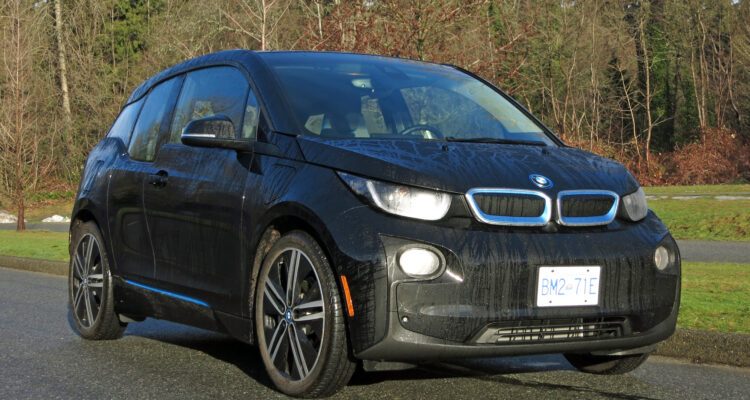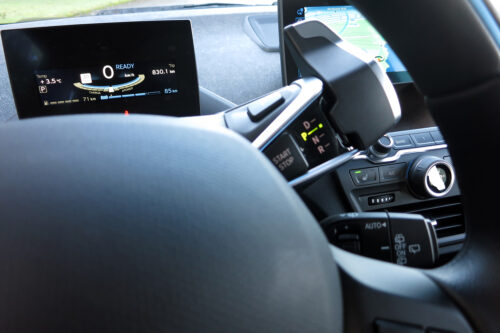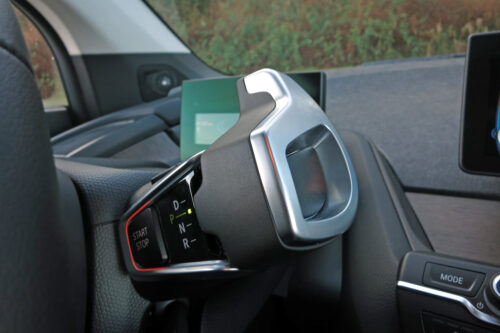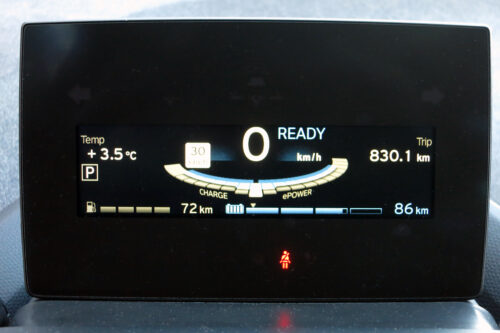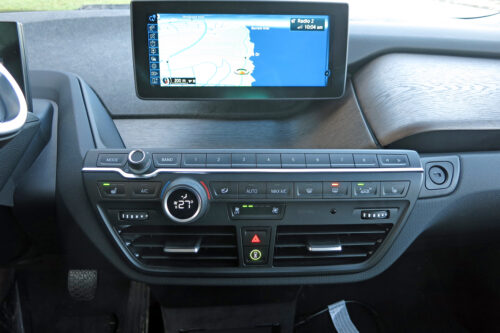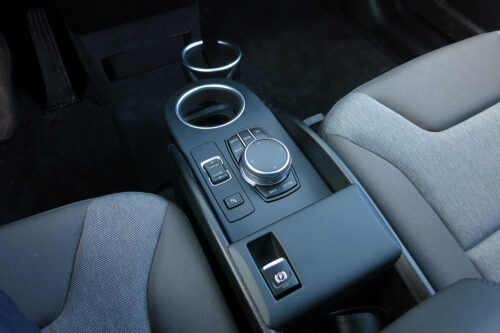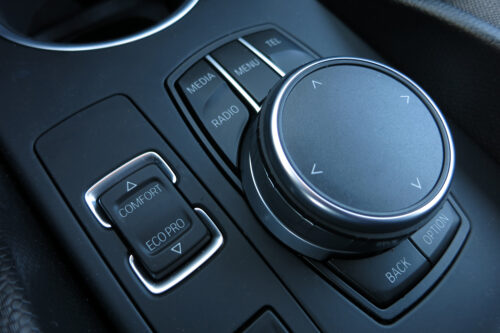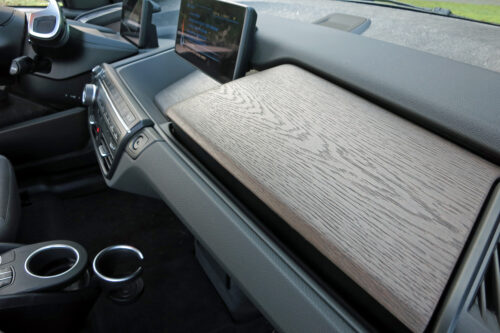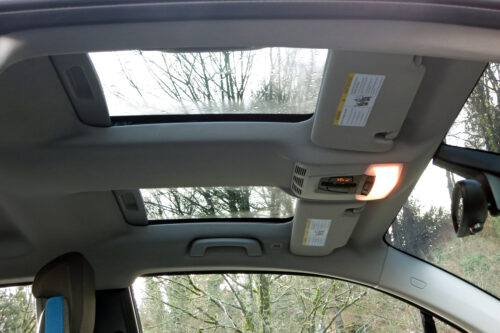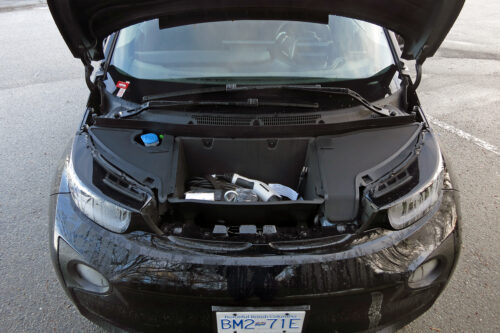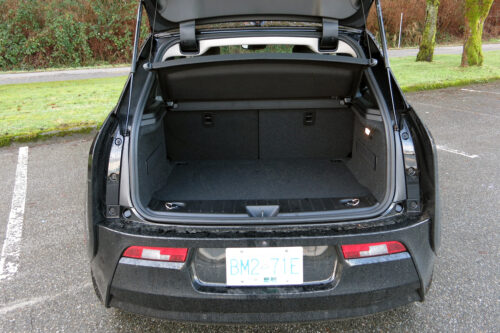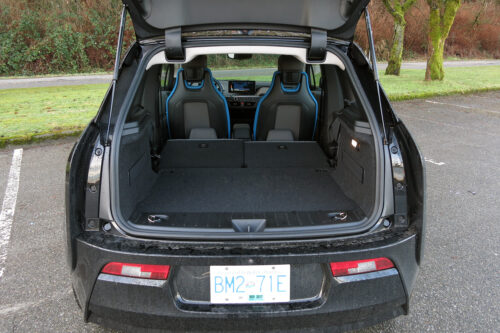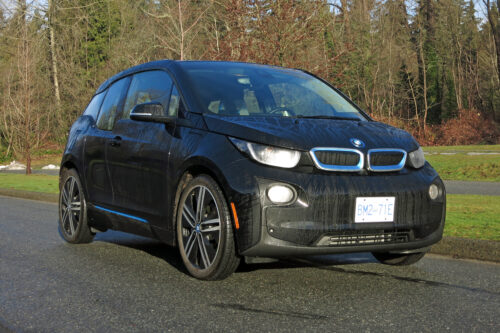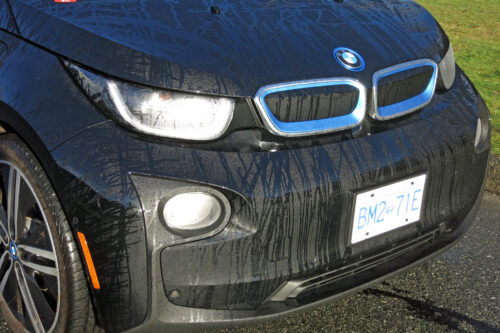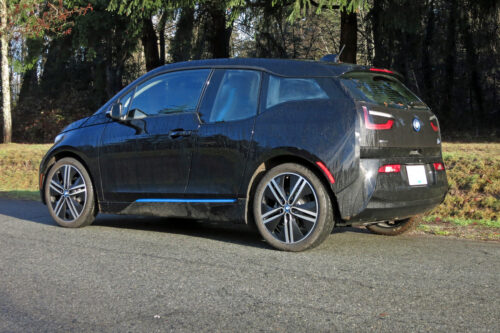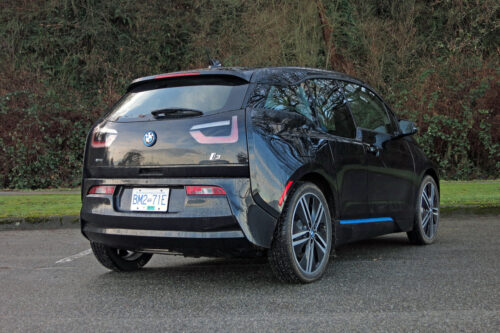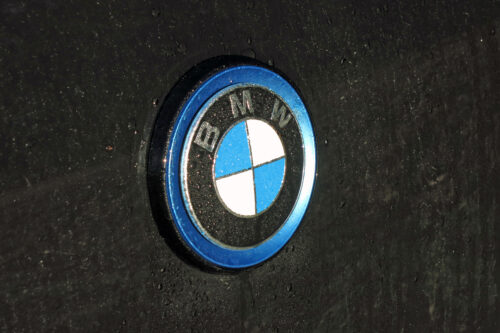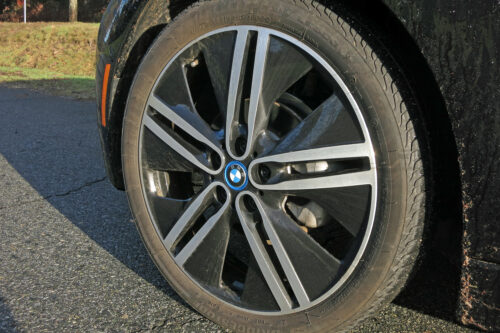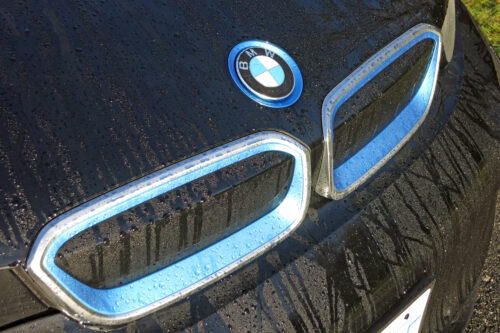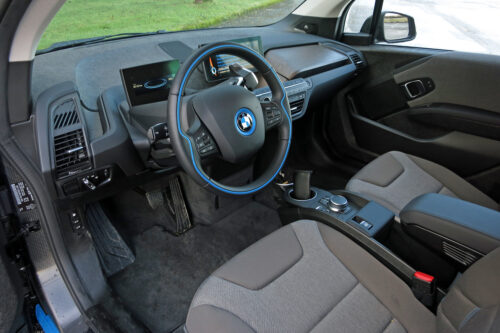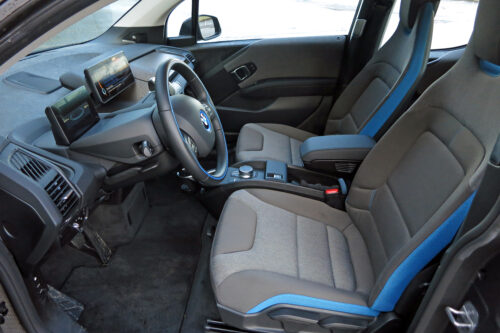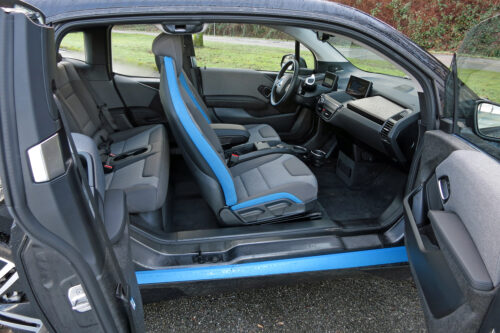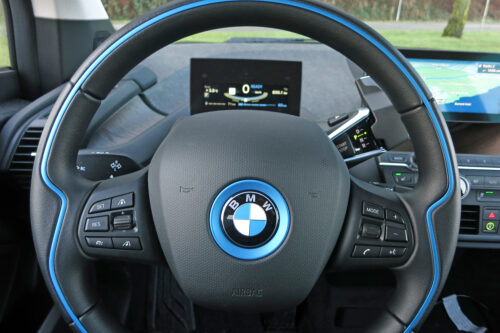Want to know what sets the BMW i3 apart from its electrically-driven competitors? Rear-wheel drive. Unlike Nissan’s Leaf, Ford’s Focus EV, Kia’s Soul EV, and even Chevy’s “Tesla 3 crushing” Bolt, the i3 is pushed rather than pulled, and that delivers the best driving dynamics within the aforementioned bright sparks.
But there’s a lot more to the i3 than its surprising athleticism.
Whether you like or despise its funky design, and frankly it’s grown on me during our week of bonding, the rather expensive i3 ($61,845 as tested) delivers more range for 2017 thanks to further densification of its high-voltage battery, increasing its kWh output to 33 from 22. What this really means is that there’s more electrical fuel in the tank, which now has the capacity to send the i3 up to 200 km before depleting the battery according to BMW’s literature.
With the optional Range Extender, which pumps the base price up from $47,500 to $52,000, the i3 is capable of an additional 150 km of range, though it’ll use approximately nine litres of fuel in the process. The range-extender technology is comprised of a 650 cc 2-cylinder gas engine, which drives a generator to keep the battery charged once it drops to 6.5% of its capacity.
For typical urban driving routines, the range extender is unnecessary given the 200 or so kilometres achievable exclusively on battery power. The increased density of the battery has also extended the i3’s level-II full charge time to 4.5 hours, an hour longer than previously, but still impressive. Plugged into a high-speed DC-charger, the i3 can hit 80% of its charge capacity in 20 or so minutes.
The curse of EV charging is quickly diminishing with the rapid propagation of private and public charge stations. I found rock-star parking on Vancouver’s highly popular Granville Island in an EV-only slip that included free level-II charging. Was I smug as I plugged ‘er in and sauntered a few steps into the market? You bet!
Of course, do a little research around the mining processes needed to produce lithium-ion batteries and the smugness may wane fairly quickly; seemingly, that applies to almost anything with a battery these days. Nonetheless, in regions of the world that derive electrical power cleanly from hydro, solar, or wind sources, the off-set after years of EV driving is a good one.
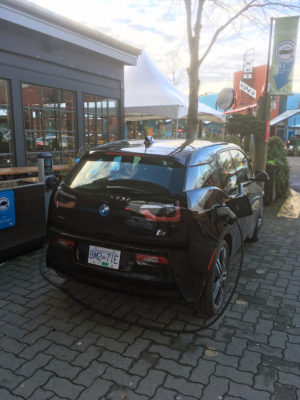
Further off-sets are achieved during the i3’s manufacturing process thanks to BMW’s CO2-free assembly plant in Leipzig, Germany, which harvests its electricity from windpower. That’s not all; the plant uses 70% less water in the production process than conventional assembly plants.
With our eco-guilt gently assuaged, let’s get back to the matter at hand. In addition to its electron-driven propulsion, which by the way can thrust the i3 from zero to 100 km/h in just over seven seconds according to BMW, this is a well thought-out package with plenty of human and cargo-accommodating space.
With seating for four and 260 litres of cargo capacity, the i3 delivers plenty of real-world functionality. Headroom, even in the rear seat, is generous thanks to the vehicle’s high roofline and boxy shape. The split rear seat drops easily, creating a Costco-worthy cargo bay of 1,100 litres.
With a turning radius under 10 metres, parking in the Costco lot is a simple exercise made even easier thanks to a high-contrast back-up camera and great all-around visibility. Adding the $3,000 Premium Package, which was included on my tester, simplifies parking even further with the inclusion of BMW’s self-park technology. The Premium Package also includes navigation, upgraded wheels, and comfort access.
As practical and convenient as the i3 is, those attributes pale in contrast to the fun found behind the wheel of the electrified Bimmer. Despite its tall stature and skinny Ecopia low rolling-resistance tires, the i3 is a blast in the corners thanks in part to its near-perfect 50/50 front-to-rear weight ratio.
The i3’s grip is more tenacious than one expects, especially when the motor’s instant hammer of 170 horsepower and 184 lb-ft of torque hits the rear wheels, shooting the lightweight i3 past an apex; all the while, producing no noise. Eerie doesn’t begin to describe the sensation.
There’s no doubt that the i3’s carbon-fibre construction contributes to the sense of solidity one feels behind its wheel. Also experienced is a taut ride quality that on occasion can feel a little stiff and jarring. I guess that’s a wee the trade-off in favour of the i3’s engaging driving dynamics, and I’m quite okay with it.
It’s a good week when I can drive near-endless miles in a fun, relatively guilt-free vehicle, while directing a middle finger toward each passing gas station in Vancouver posting fuel prices at $1.23.9.
Yes, returning the “Lightning from Leipzig” to BMW Canada is going to be an unwelcome shock.
2017 BMW i3
Trim level: REX (Range Extender)
Price as tested (before taxes): $61,845
Freight: $2,145
Configuration: rear electric motor, rear-wheel drive
Engine/transmission: 94 Ampere-hour
(Ah) battery – 33 kilowatt hours (kWh)
single speed
Power/torque: 170 hp / 184 lb-ft
Range: up to 200 km electric, plus additional 150 km
when equipped with the range extender option
Battery warranty: 8 years / 160,000 km
Competitors: Chevrolet Volt & Bolt, Ford Focus EV, Kia Soul EV, Nissan Leaf
Related links:



